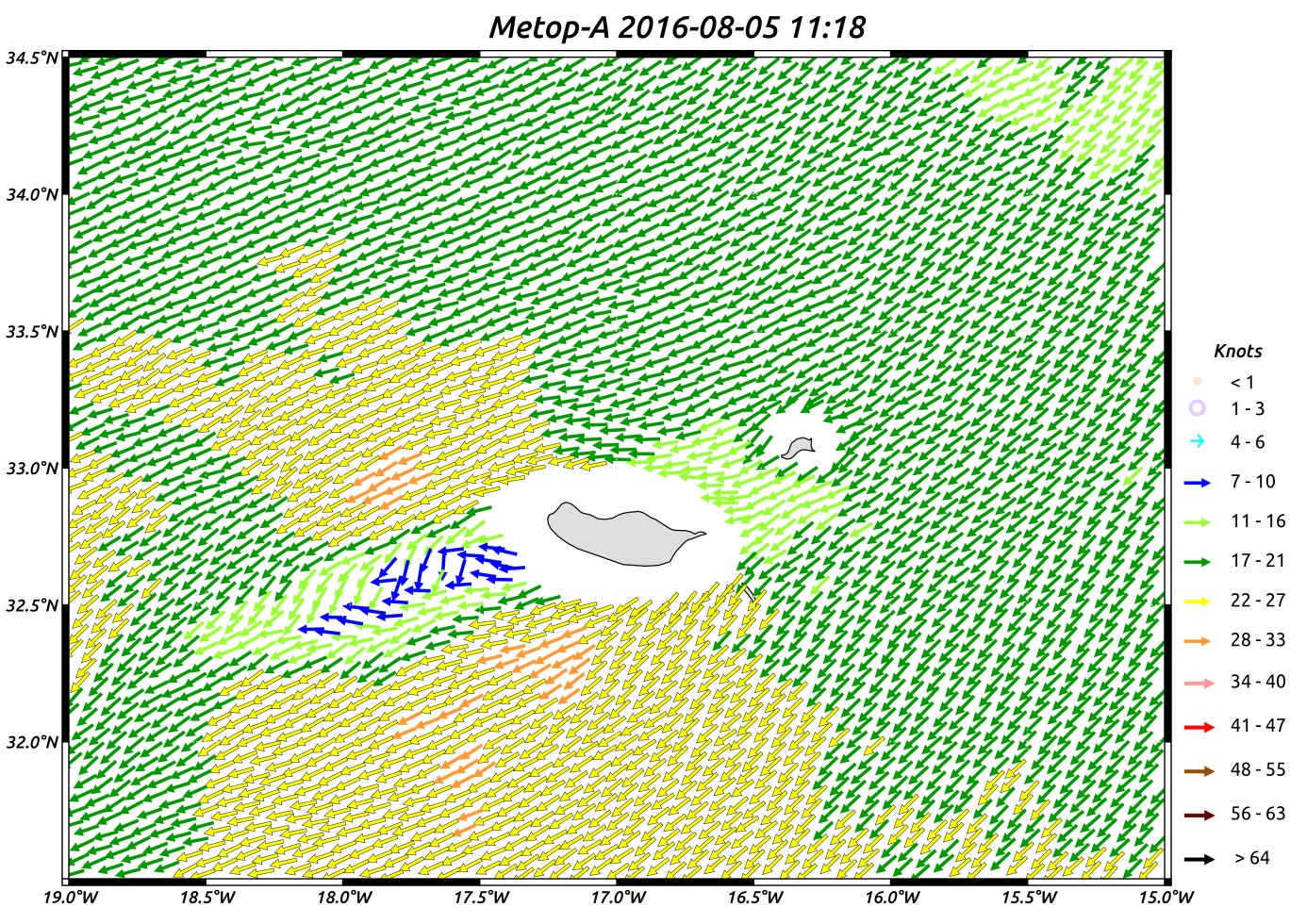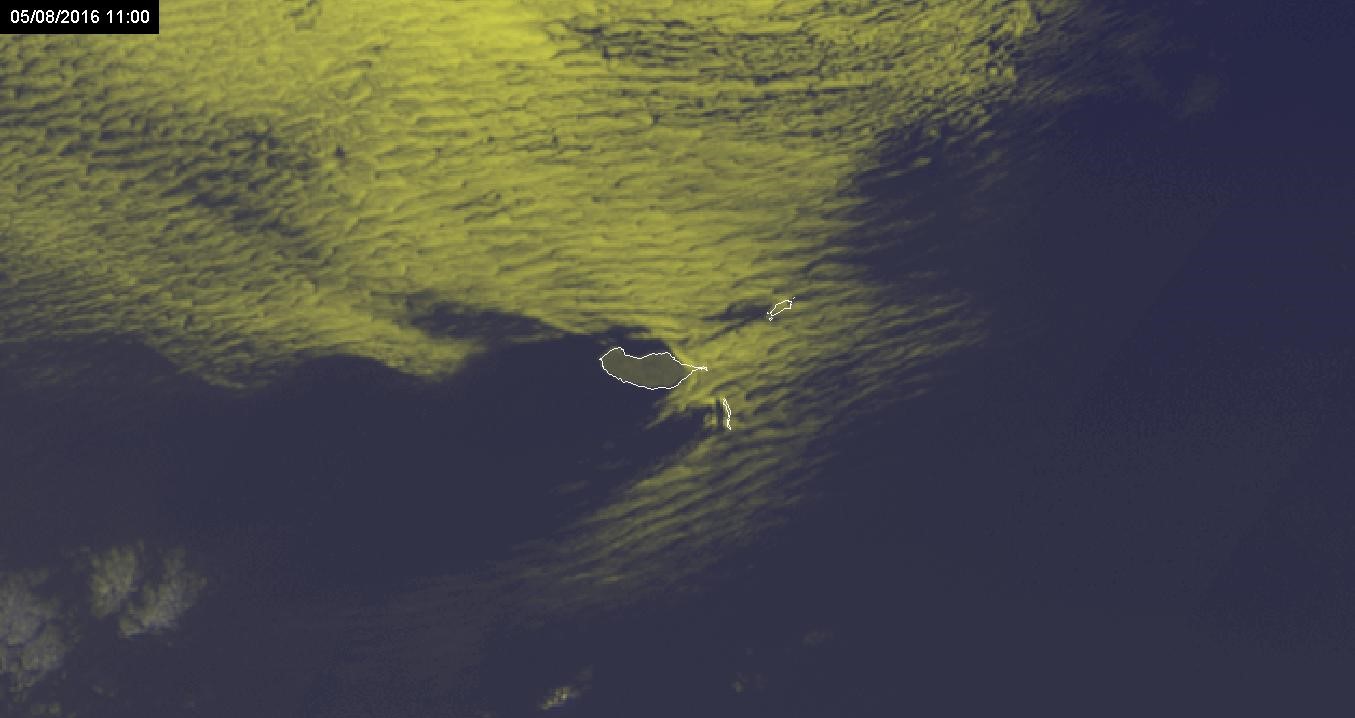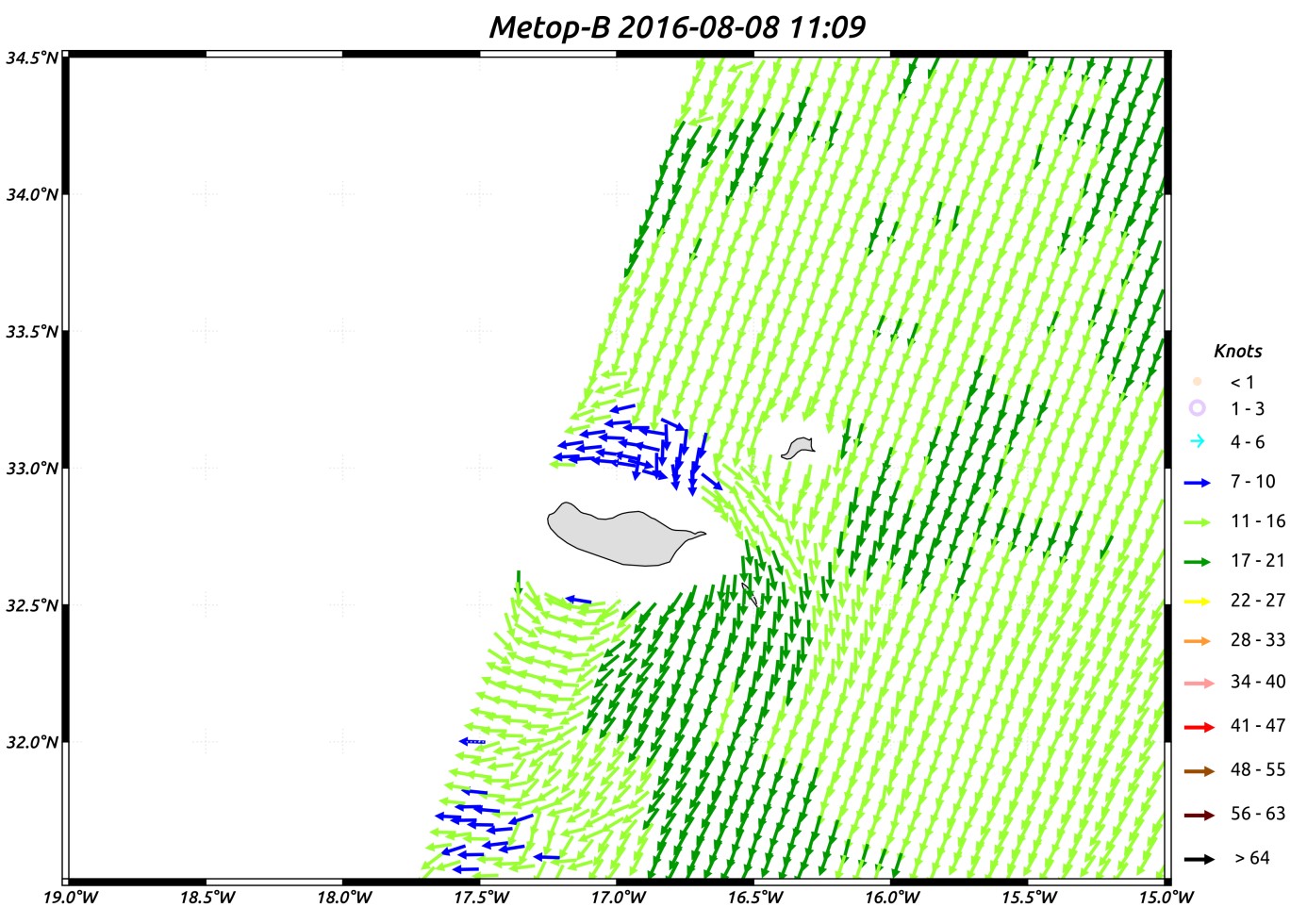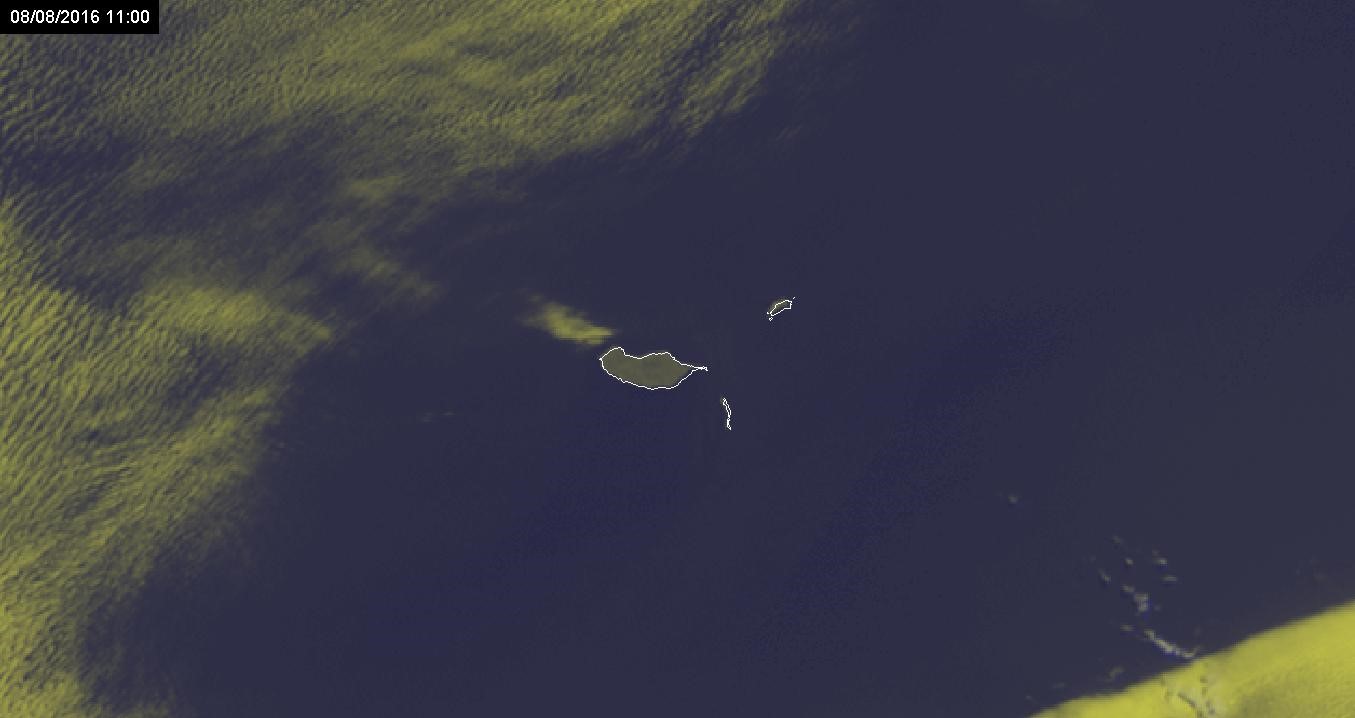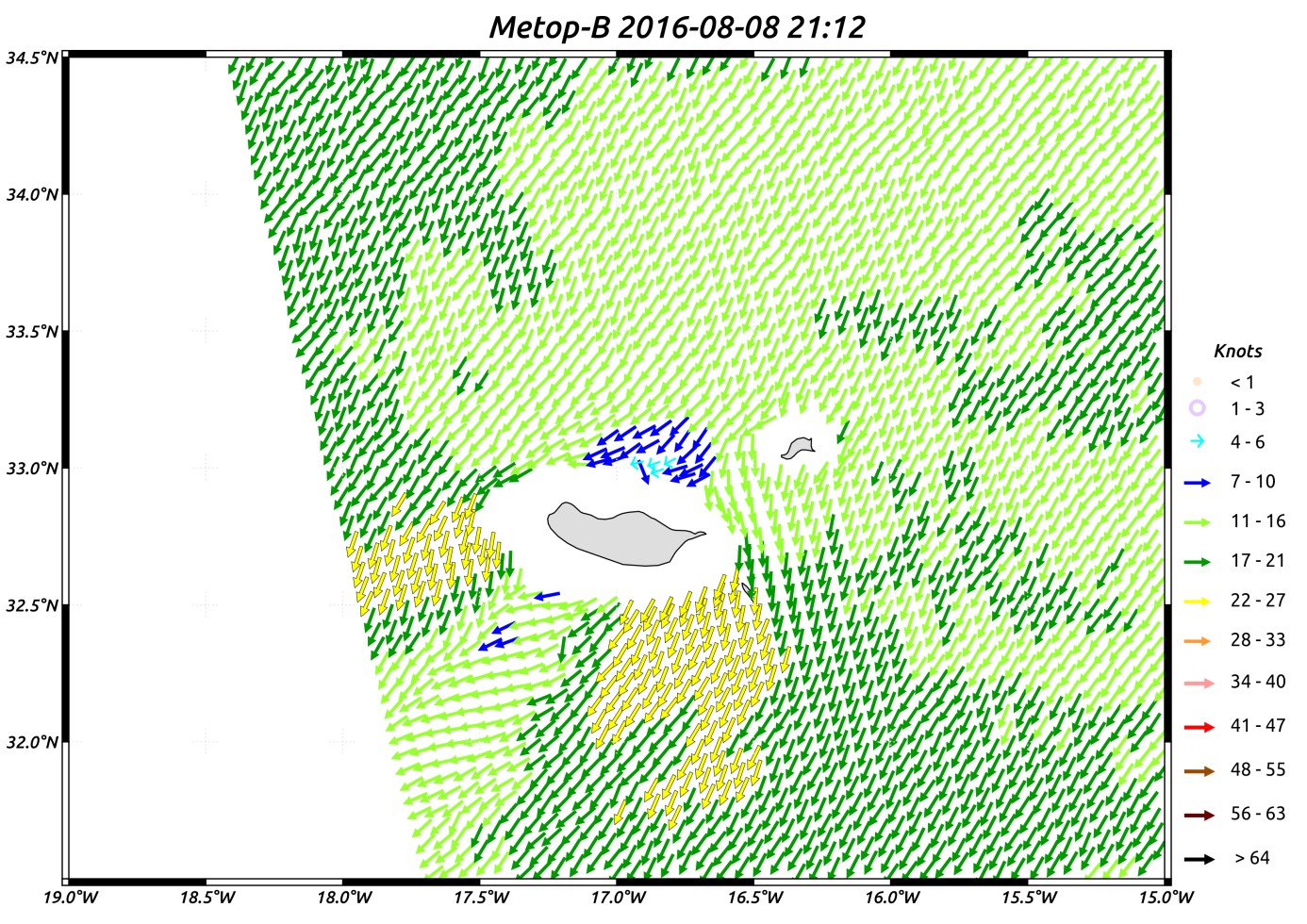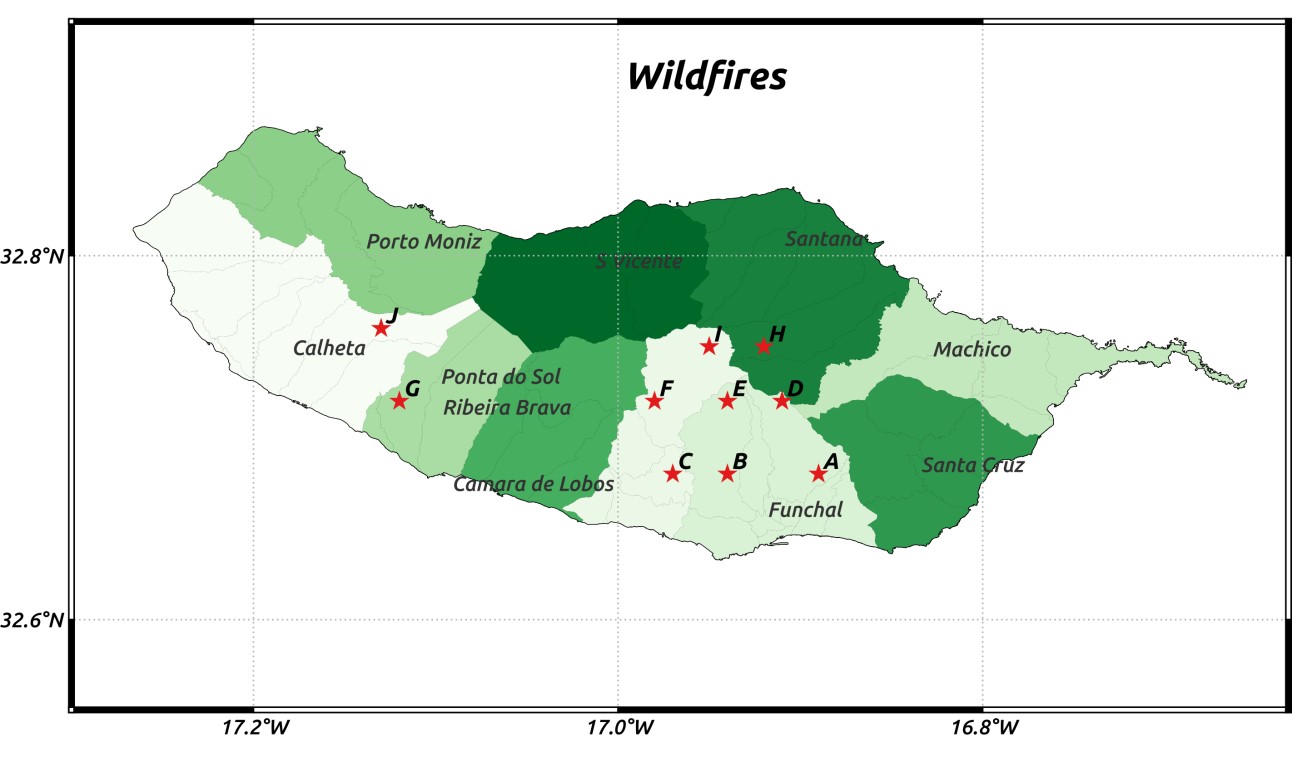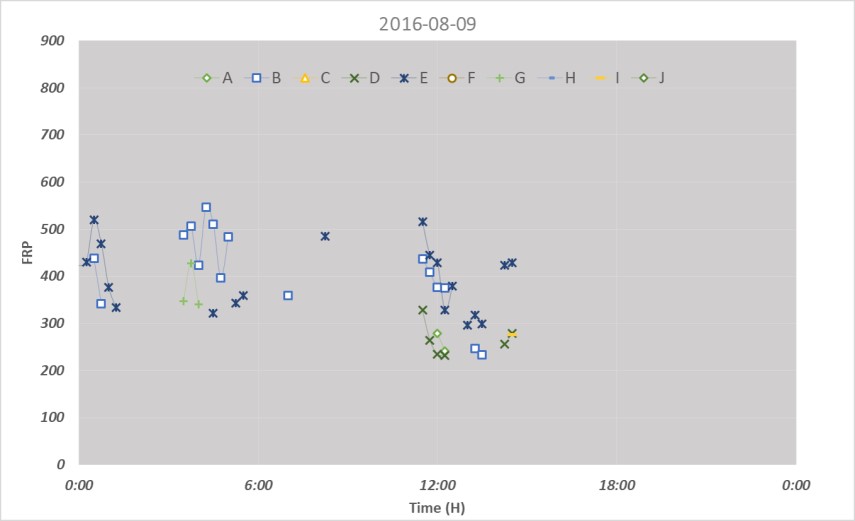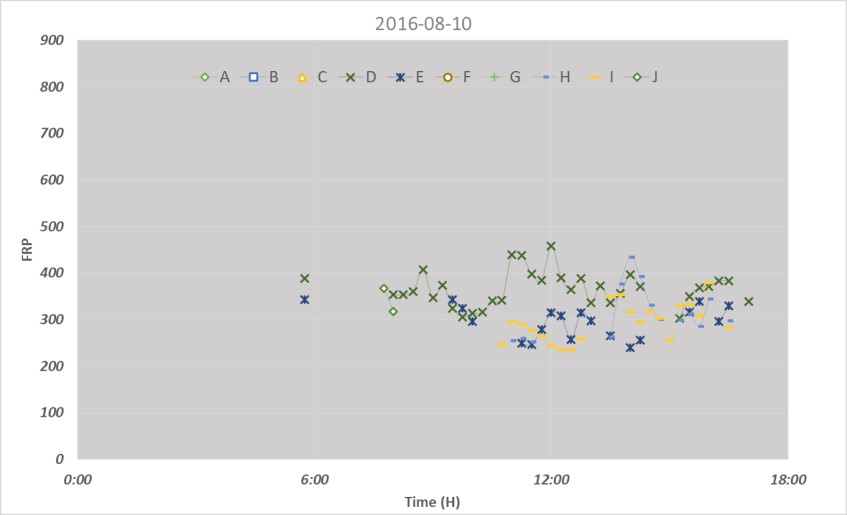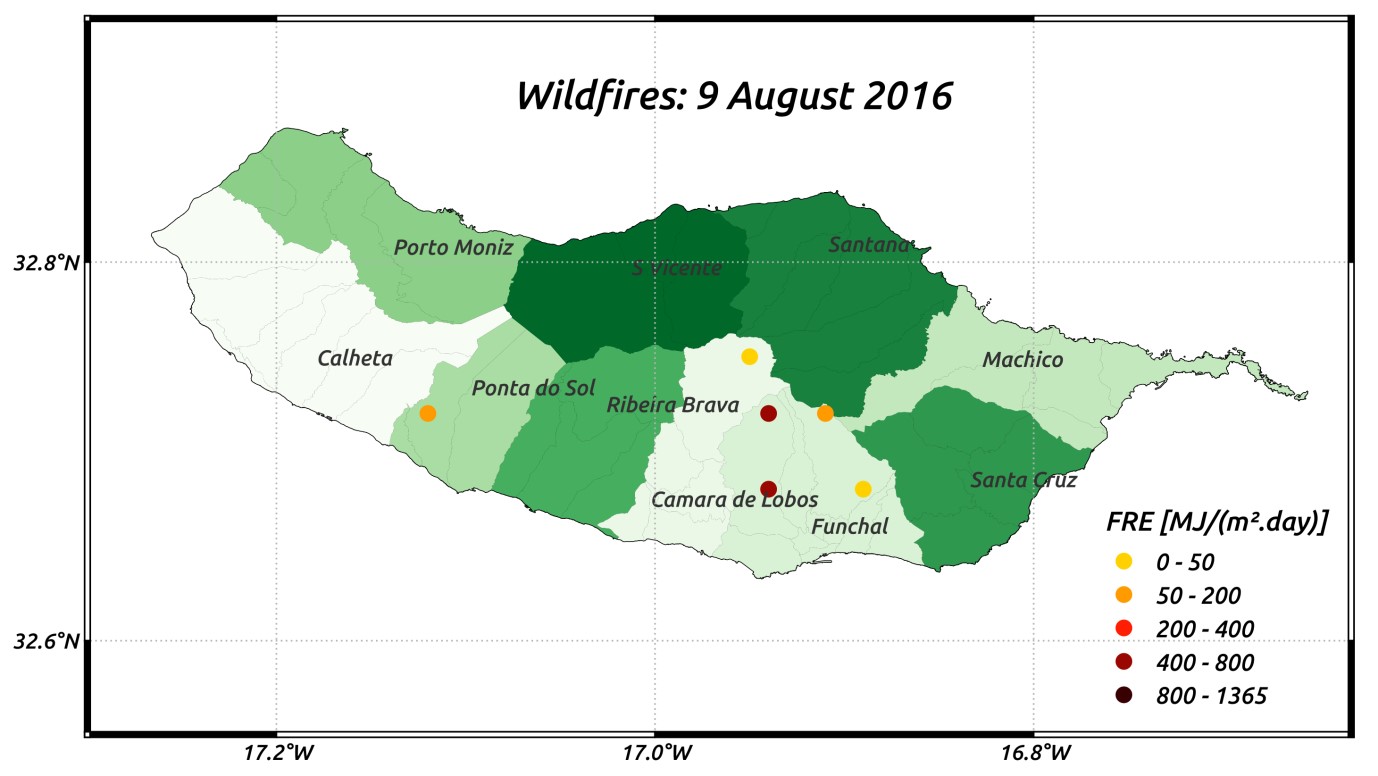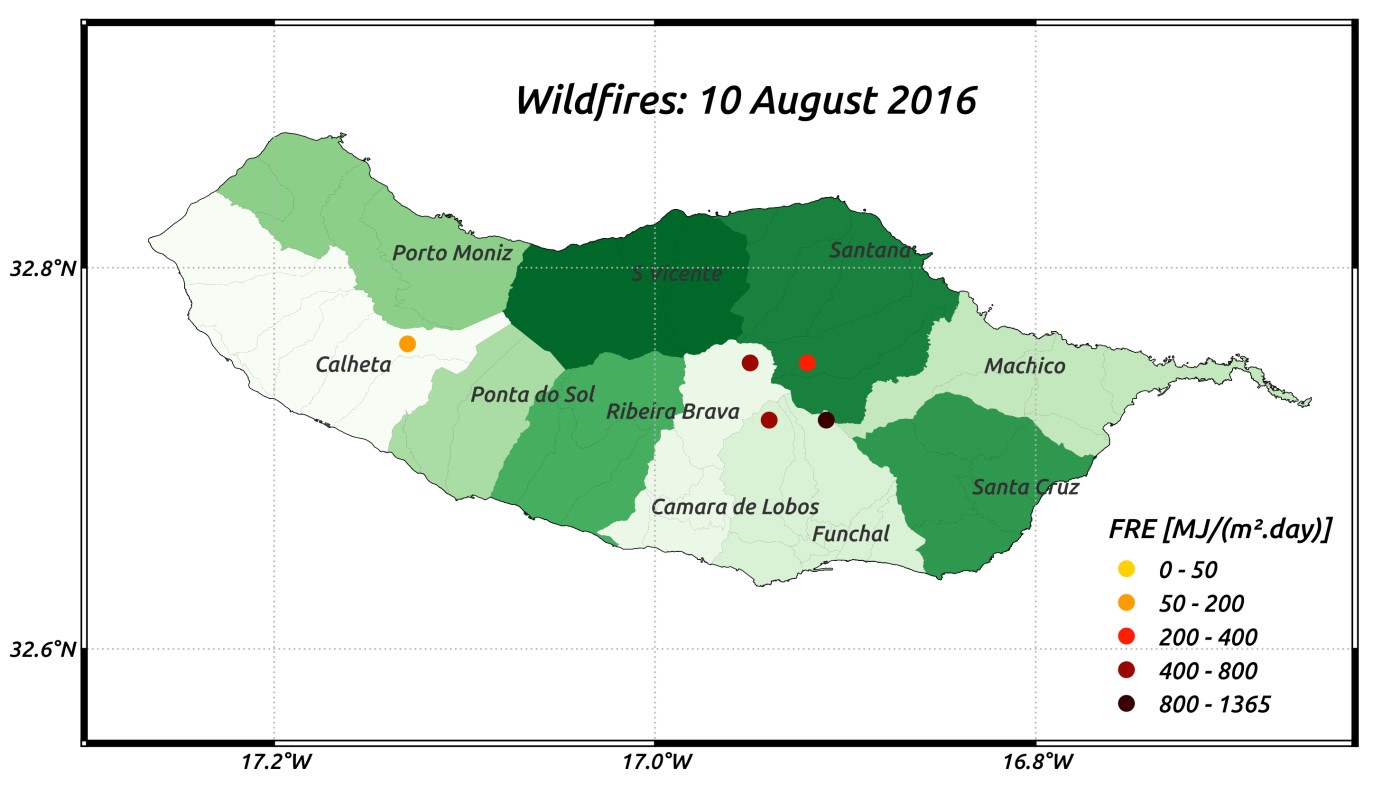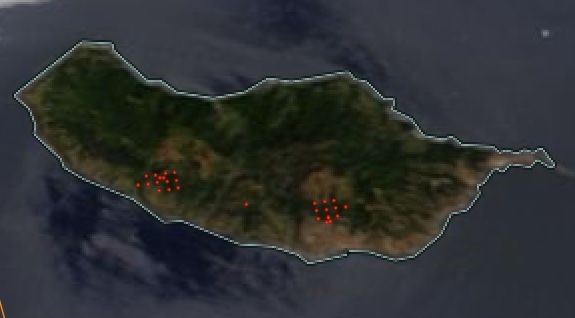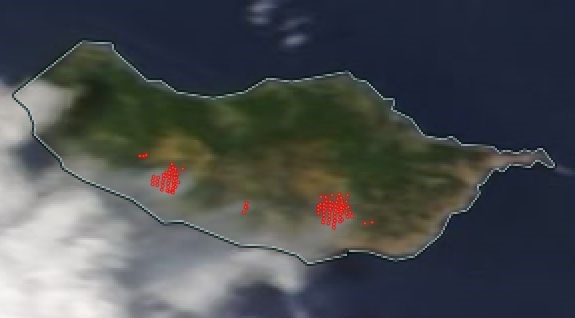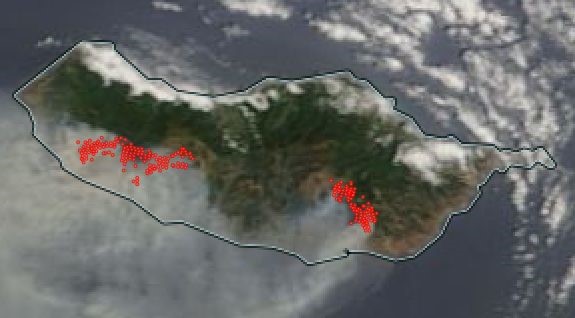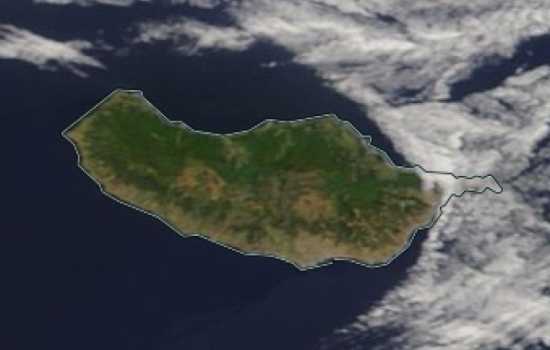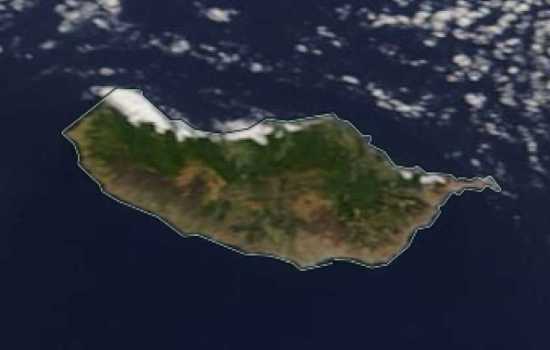Chapter IV: Satellite Data and Products
Table of Contents
- Chapter IV: Satellite Data and Products
- Different features in satellite images and products
- ASCAT new 6.25 wind product
- Satellite fire products
Different features in satellite images and products
Sometimes foehn events are detected in satellite imagery by distinctive cloud formations. The foehn wall is an orographic cloud band that forms along the ridge summit of mountain ranges due to condensation of moisture as the air is lifted up the windward slopes. The foehn arch is an extensive layer of altostratus clouds that forms downwind of the mountains in the rising portion of a lee mountain wave. The foehn gap is a band of clear air that can be observed between the wall and the arch. In this case study, the foehn event occurs with mainly dry air at different levels, making foehn identification difficult in satellite images. Moreover, the cloudy downwind that could indicate the presence of a lee mountain wave was absent.
ASCAT new 6.25 wind product
Space-borne scatterometers regularly provide a large number of measurements of near surface wind in places where conventional observations are scarce. Their wind speed and direction data are reported as the equivalent neutral-stability wind at 10 m height above the sea surface. In the inner coastal region, wind estimates from scatterometers are restrained by the distance to shore since backscatter measurements are strongly affected by the presence of land. Nevertheless, these products allow obtaining good quality data of winds over the sea surface as close as 15-20 km from the coast line (Verhoef et al., 2012).
Recently, an ASCAT scatterometer on a 6.25 km grid with a true spatial resolution of about 17 km has become available (Vogelzang et al., 2017). This product was developed by KNMI in the Netherlands in the framework of the Numerical Weather Prediction Satellite Application Facility (NWPSAF).
ASCAT-6.25 data were obtained using the full resolution ASCAT L1B product from EUMETSAT Earth Observation portal as input. ASCAT-6.25 product was generated employing ASCAT wind data processor (AWDP) version 2.4 (AWDP-2.4) and was generated with an aggregation radius of 7.5 km, which offers the best possible compromise between resolution and accuracy (Vogelzang et al., 2017). At present, the AWDP developed by NWPSAF allows deriving ocean vector winds on a 25 km, 12.5 km, or 6.25 km grid, but the latter is currently not distributed operationally and has to be generated individually by users.
In the ASCAT-A pass shown in fig. 4.1, the synoptic wind is from the north-east and downstream Madeira Island the change in wind field pattern is clear. Upstream the wind is less intense but there is no clear change in wind direction. At this time (11:18 UTC), the foehn-like conditions were not detected anymore at Funchal weather station. However, this ASCAT wind product is only valid 15-20 km from the coast line, so the upstream flow deceleration could still be present near the island.
Figure 4.1: ASCAT-A 6.25x6.25 wind product on 5 August at 11:18UTC.
Figure 4.2: HRV RGB on 5th August 2016 at 11:00UTC.
In the ASCAT-B pass on 8 August (fig. 4.3), the second event, the synoptic wind is from north/north-east and the changes in wind field direction and speed upstream of Madeira Island are clear. The area of light winds is consistent with a possible stagnant area associated with the blocking mechanism. It is also possible to see the flow going around the island.
Figure 4.3: ASCAT-B 6.25x6.25 wind product on 8 August at 11:09UTC.
Figure 4.4: HRV RGB on 8th August 2016 at 11:00UTC.
Later that day, in the ASCAT-B pass shown in fig. 4.5 at 21:12 UTC, the synoptic wind is from the north-east and the changes in wind field direction and speed upstream of Madeira Island are again clear. The area of light winds can be detected and the flow is going around the island.
Figure 4.5: ASCAT-B 6.25x6.25 wind product on 8 August at 21:12UTC
Figure 4.6: Night Microphysics RGB on 8th August at 21:00 UTC
Satellite fire products
The Fire Radiative Power (FRP [MWatts]) is a product derived from satellite that records information about the location, timing and the amount of radiant heat energy released per unit time from the burning vegetation and/or organic soils present within a pixel. From 8 to 10 August 2016, several hot spots were detected in the area of Madeira Island.
The FRP product, available from the LSA SAF (http://lsa-saf.eumetsat.int/), is derived every 15 min at the native SEVIRI pixel spatial resolution and across the full SEVIRI imaging disk. It is based on the Wooster et al. (2003) "MIR radiance method" of FRP derivation adapted for use with geostationary systems. The same method is used within the Collection 6 EOS-MODIS Fire Products (MOD14 and MYD14) generated by NASA.
The high temporal frequency of MSG observations allows to detect a fire at a very early stage and to monitor its development.
The location of the fires as detected by the LSA SAF FRP product for Madeira Island from 8 to 10 August is shown in fig. 4.7.
Figure 4.7: Location of fires detected in Madeira Island from 8 to 10 August by the LSA SAF Fire Radiative Power product.
Fig. 4.8 and 4.10 show the FRP values for each of the locations A to J, plotted every 15 min., from 8 to 10 August.
Figure 4.8:FRP values for each of the locations A to J presented in fig. 4.7, as detected by the LSA SAF FRP product (MW/m2), every 15 min., 8 August.
Figure 4.9:FRP values for each of the locations A to J presented in fig. 4.7, as detected by the LSA SAF FRP product (MW/m2), every 15 min., 9 August.
Figure 4.10: FRP values for each of the locations A to J presented in fig. 4.7, as detected by the LSA SAF FRP product (MW/m2), every 15 min., 10 August.
From these figures we can reach conclusions about the intensity and duration of the detected fires during the study period:
- The fires were first detected by satellite (i.e, by the LSA SAF FRP MSG product) at 15:45 UTC on 8 August;
- Fires at locations B and E were identified on 8 August and continued through the next day;
- The strongest fires occurred on 8 August (locations B and J);
- Persistent fires were observed at locations D and E;
- The detected fires were generally weaker on 10 August.
It has been demonstrated in small-scale experimental fires that the amount of radiant heat released in a fire per unit time (i.e. the Fire Radiative Power) correlates to the rate at which fuel is being consumed. This is a result of the combustion process, whereby carbon-based fuel is oxidised to CO2 (and other gaseous and particulate products), with the accompanying release of a certain 'heat yield'. Measuring FRP and integrating it over the lifetime of a fire provides an estimate of the total Fire Radiative Energy (FRE) released, which for landscape fires should be proportional to the total amount of biomass burned (https://landsaf.ipma.pt/en/products/fire-products/frppixel/).
Fig. 4.11 to 4.13 show the energy released for each of the fires, per day, in MJ/m2.
Figure 4.11: Daily radiative energy released by landscape fires in Madeira Island, 8 August 2016, in MJ/m2 day).
Figure 4.12: Daily radiative energy released by landscape fires in Madeira Island, 9 August 2016, in MJ/m2 day).
Figure 4.13: Daily radiative energy released by landscape fires in Madeira Island, 10 August 2016, in MJ/m2 day).
The FRP approach therefore provides an alternative to computing wildfire fuel consumption through methods that rely on the mapping of burned area and assuming, measuring or modelling the supposed fuel consumption per unit area. The Global Fire Assimilation System (GFAS) used in the Copernicus Atmosphere Monitoring Service assimilates fire radiative power (FRP) observations from satellite-based sensors to produce daily estimates of biomass burning emissions.
The impact of the fires on the vegetation cover was analysed by computing anomalies of the Fraction of Vegetation Cover product from the LSA SAF (FVC) for a 10-day period before (21-31 July) and after (21-31 August) the fire events. The anomalies were computed taking into account the years 2004-2016 as a reference.
Figure 4.14: Anomalies of LSA SAF FVC for a 10-day period before (21-31 July) and after (21-31 August) the fire events.
The data show a negative anomaly on the FVC after the fire events, mainly in the regions of Funchal and the south-western part of the island. Yet, in the latter region, no fires have been detected by the LSA SAF FRP product. The reason for this may be that the fires were not large or hot enough to be detected in the ~4 km2 of the SEVIRI footprint. In that case, the MODIS FRP product can be used to verify if some hot spots have been detected by the ascending and descending passages of Terra or Aqua satellites. The great advantage of the MODIS FRP product is that it can detect small fires (in optimal - but rare - conditions this can be ~50 m2). On the other hand, it can miss a fire that started and ended between satellite overpasses.
Figure 4.15: Fire pixels as detected by MODIS (AQUA and TERRA) and VIIRS (Suomi NPP) on 8 August. The underlying RGB true color image corresponds to MODIS Terra, and was obtained from corrected reflectance imagery (bands 1 4 3 | red, green, blue) at a 250 m spatial resolution. Source: https://worldview.earthdata.nasa.gov.
Figure 4.16: Fire pixels as detected by MODIS (AQUA and TERRA) and VIIRS (Suomi NPP) on 9 August. The underlying RGB true color image corresponds to MODIS Terra, and was obtained from corrected reflectance imagery (bands 1 4 3 | red, green, blue) at a 250 m spatial resolution. Source: https://worldview.earthdata.nasa.gov.
Figure 4.17: Fire pixels as detected by MODIS (AQUA and TERRA) and VIIRS (Suomi NPP) on 10 August. The underlying RGB true color image corresponds to MODIS Terra, and was obtained from corrected reflectance imagery (bands 1 4 3 | red, green, blue) at a 250 m spatial resolution. Source: https://worldview.earthdata.nasa.gov.
As seen in Fig. 4.15 to 4.17, several pixels were classified as hot spots, even under cloud/smoke conditions.
Comparison of the true color MODIS images from 5 August (before the fires) and 14 August (just after the fires), shows the presence of a brown region that coincides with the FVC negative anomaly for the 21-31 August decade.
|
|
Figure 4.19: The true color MODIS image from 14 August reveals a brownish area that was not seen on 5 August, highlighting the effect of the fires that hit Madeira Island form 8 to 10 August.
Fig. 4.18 and 4.19 - The true color MODIS image from 14 August reveals a brownish area that was not seen on 5 August, highlighting the effect of the fires that hit Madeira Island form 8 to 10 August.
Aerosol Optical Depth (AOD, or Aerosol Optical Thickness) can be used to estimate the amount of smoke in the atmosphere. AOD is a 'non-dimensional' quantity (it having no units of measurement), so higher values of AOD indicate more aerosols, like smoke particles, in the air. An AOD value near 1 indicates quite hazy conditions. If AOD values approach the range of 2 or 3, this would be like being under the ash cloud from a volcanic eruption only a few Km away. AOD indicates the level at which particles in the air (aerosols) prevent light from travelling through the atmosphere. Fig. 4.20 shows the AOD from MODIS /AQUA on 10 August. The dark red colours correspond to AOD values between 0.695 and 1.990. The highest AOD values follow the smoke cloud seen in the MODIS RGB True colour image in the background.
Figure 4.20: The Aerosol Optical Depth (AOD, or Aerosol Optical Thickness) from MODIS(AQUA) on 10 August. The dark red colours in the image correspond to AOD values between 0.695 and 1.990. AOD indicates the level at which particles in the air (aerosols) prevent light from travelling through the atmosphere.
